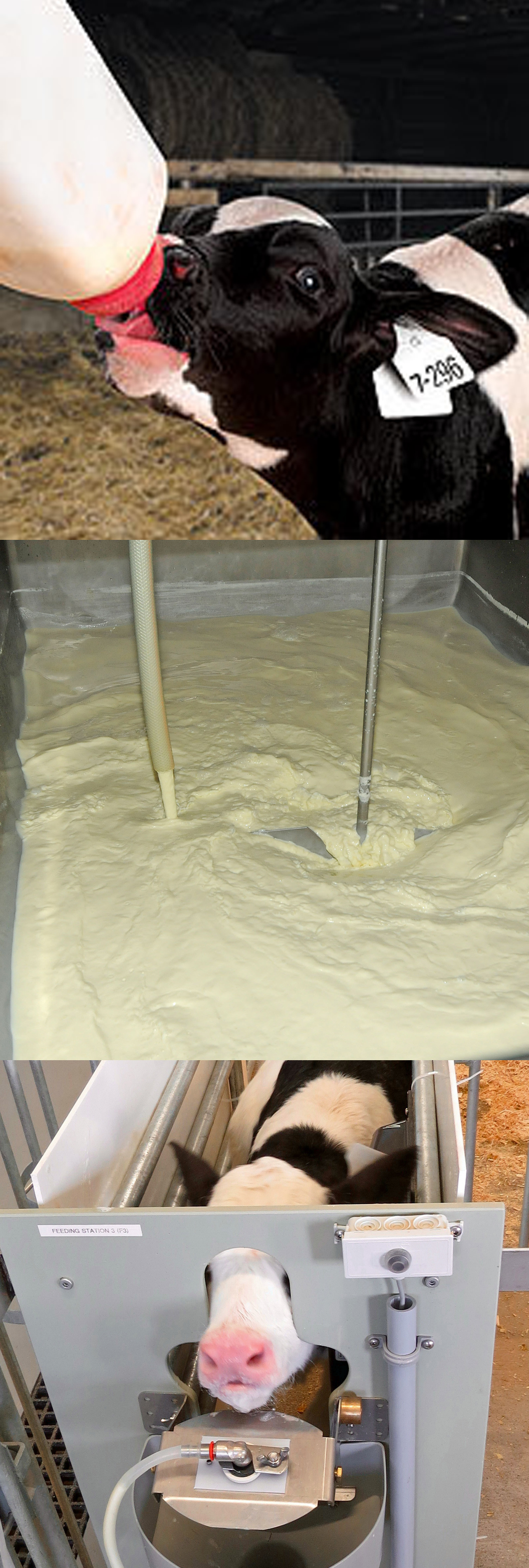Healthy Calf Conference
Follow to stay up-to-date on all Healthy Calf Conference updates. Speaker announcements, sponsorship information, registration announcements, and more.
There is no “one size fits all” solution for milk feeding calves. Due to the huge variation in milk and milk replacer quality and different management systems, no one type is always better for every situation. Regardless of which choice you make for your calves, aim to ensure they grow well, are healthy and are not hungry. Remember, feeding calves is an investment, not just an expense.
Choosing the right type of milk to feed your calves
Choosing to feed calves whole milk or milk replacer is a big decision, as it can have an impact on lifelong performance. Here is our list of pros and cons of each type of milk.
How much and how often to feed milk to calves
In Canada, calves are generally fed about ten percent of their body weight in milk or milk replacer per day during. In a 2010, researchers found that the average program was four litres split in two meals per day for the first week of life followed by five and a half litres per day split in two meals per day. Calves on an automatic feeder with unlimited milk allowance will have several small meals throughout the day. This adds up to an average of ten kilograms of milk or milk replacer per day (approximately ten to twelve litres) over ten feedings. For Holsteins, this is about twenty percent of their bodyweight, more than double what the average Canadian calf receives.

Milk replacer
Milk replacer is commonly fed to calves instead of feeding whole milk. This leaves more milk available to be marketed. Selecting the right type of milk replacer for your feeding program and preparing the milk replacer properly is key optimizing calf health and growth.
Whole milk
In Canada, feeding salable whole milk to calves is often a method to expend milk produced over available quota. Some producers feed waste milk that is not suitable for the milk tank to calves.
Individual feeding
According to the National Farm Animal Care Council’s “Code of Practice for the Care and Handling of Veal Cattle,” calves must be grouped as young as possible, and not later than eight weeks. While housing calves individually can be beneficial for monitoring health, the risk of disease transmission is not lower than calves in small (less than ten), well-managed groups.
Group feeding
Housing calves in groups or pairs benefit health, welfare, and growth. However, feeding a groups presents new challenges.
Do calves need to drink from a nipple?
One of the first goals when feeding calves milk is usually to transition them to drinking from a bucket as soon as possible. It’s no secret that bottle-feeding calves takes more time than bucket-feeding calves. Feeding calves milk or milk replacer from buckets is simple; it is easier to pour milk into a bucket than a bottle, and some find buckets easier to clean than bottles. However, when calves drink milk from buckets rather than sucking milk through a nipple, they are more likely to display abnormal behaviours like nonnutritive sucking (sucking on objects within the pen) or cross-sucking (sucking on other calves.)
Feeding to prevent disease
Why do calves respond differently to disease? There are several management factors that affect whether a calf gets sick, and how they fight this challenge, including calving difficulty, colostrum management, housing and hygiene. Calves are also particularly susceptible to disease when they have been transported or exposed to calves from other farms.
Follow to stay up-to-date on all Healthy Calf Conference updates. Speaker announcements, sponsorship information, registration announcements, and more.
The Codes of Practice are nationally developed guidelines for the care and handling of farm animals. They serve as our national understanding of animal care requirements and recommended practices.